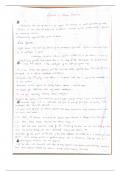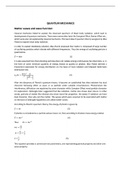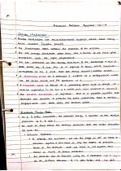Schrodinger - Study guides, Revision notes & Summaries
Looking for the best study guides, study notes and summaries about Schrodinger? On this page you'll find 9 study documents about Schrodinger.
All 9 results
Sort by
Complete lecture notes for first year Quantum Mechanics course for the Physics degree at the University of Birmingham. Course was 11 lectures.

-
Atoms and Quanta Lecture Notes (PHY1040)
- Lecture notes • 64 pages • 2022
- Available in package deal
-
tiffanybiles
-
- £7.99
- + learn more
Full module lecture notes with a highlighted system for headings, equations, key information and extra information
it is about quantam mechanics
Year 3 Physical Chemistry - Molecular Reaction Dynamics Written Notes Full Lecture Course
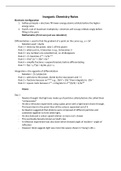
-
Inorganic Chemistry Lecture Notes
- Lecture notes • 22 pages • 2021
- Available in package deal
-
 violet181
violet181
-
- £5.49
- + learn more
Mix of lecture notes from Inorganic Chemistry module includes work about atoms, ligands etc
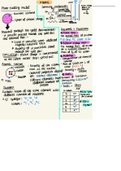
-
Biological chemistry and microbiology part 1 lecture notes
- Lecture notes • 14 pages • 2022
-
senagurol
-
- £7.49
- + learn more
This covers the lecture notes for the first major topic covered in the first year Biological sciences module at Imperial college london (Biological chemistry and microbiology).

-
Quantum Physics - Summary of Imperial College Physics Year 1 Course
- Summary • 8 pages • 2020
-
 marie_deschamps
marie_deschamps
-
- £3.49
- 1x sold
- + learn more
Detailed 8 page summary of the Quantum Physics course taught in Year 1 at Imperial College. Includes single slit and two slit interference, photoelectric effect, 1D wavefunction, solving the 1D Schrodinger equation for infinite and finite potential wells, potential wells and barriers. Handwritten notes of the 2016-2017 course.
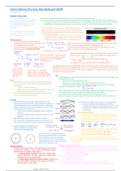
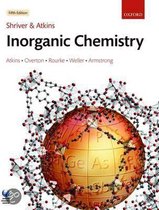
-
Intro to Atomic Structure, Periodicity and VSEPR
- Summary • 9 pages • 2019
- Available in package deal
-
 amy11chemistry
amy11chemistry
-
- £3.49
- + learn more
I got a 1st in my first year studying chemistry at the University of Birmingham using these revision notes that I have uploaded. They include detail on the Rydberg Equation, the work of Bohr, Planck and De Broglie, the Schrodinger Equation, wave-particle duality, quantum numbers, radial distribution functions, hydrogen wave functions, many electron systems, the Pauli principle, the Aufbau principle, Hund's rule of maximum multiplicity, exchange energy, transition elements, energies of the diffe...

Do you wonder why so many students wear nice clothes, have money to spare and enjoy tons of free time? Well, they sell on Stuvia! Imagine your study notes being downloaded a dozen times for £15 each. Every. Single. Day. Discover all about earning on Stuvia

